The subject of today’s HDTV review is the elegantly designed LED-LCD TV Samsung UE32C6000, a midrange LED-lit LCD television designed for apartments and bedrooms with performance in mind. So without further ado, let’s move onto our review of the Samsung UE32C6000.
<!-- google_ad_client = 'pub-2887677957235196'; google_ad_slot = '4990177225'; google_ad_width = 336; google_ad_height = 280; //-->
Note: Although we only tested the Samsung UE32C6000, our picture quality findings should be applicable to the Samsung UE32C6530, Samsung UE32C6510 and Samsung UE40C6530 which have very similar specifications but boast some extra features such as Freeview HD tuner, Internet@TV and Samsung Apps.
Samsung is no stranger to crafting beauty with substance. In fact, over the years Samsung has consistently produced iconic devices that we have all come to love and adore, and the UE32C6000 is no different. The Samsung UE32C6000 features the classic piano finish with transparent border. The stand is coated with brushed aluminum accompanied by a translucent stem.
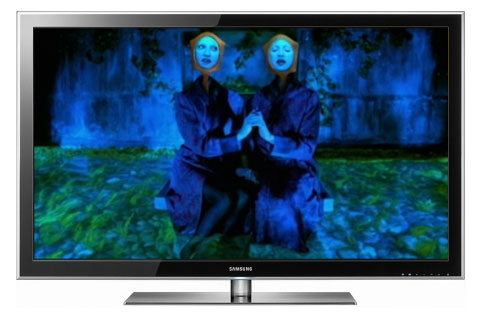
Fortunately, removing unit and assembling the stand is easy and straightforward. It helps to have someone helping but it can be assembled entirely by one person providing the unit can be placed face down on a flat surface.
For those who are green-minded, I am sorry to inform that the Samsung UE32C6000 does not feature a hard power switch, so during prolonged absence eco-lovers may want switch off the main power switch on the wall.
Since the introduction of the first Samsung super-slim LED-LCD, consumers were forced to use break-out adapters for legacy connections. Sadly, this has not changed with the Samsung UE32C6000. The location of the HDMI ports can pose a problem if the cables are bulky as the ports are in close proximity to to the side edge, so some users may be forced to use L-shape HDMI adapters if they want to keep their cables out of sight. In the future, perhaps it would be better to implement all the cabling behind the panel (akin to the location of the legacy connectors).
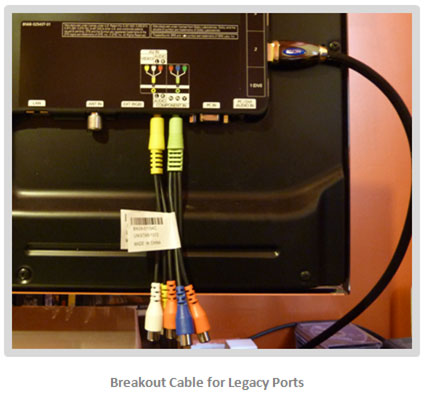
The GUI on the Samsung UE32C6000 is based on the 2009 version with enhanced responsiveness. It is now a joy to navigate through various layers of the user menu without the any aggrieving lag, which may not matter to most users but is a welcome improvement nonetheless. Frame rate also received a noticeable boost but resolution remained upsampled, which is understandable. The submenu (dubbed as Tools) allows viewers to configure the picture and sound modes as well as connect devices via HDMI-CEC (Anynet+).
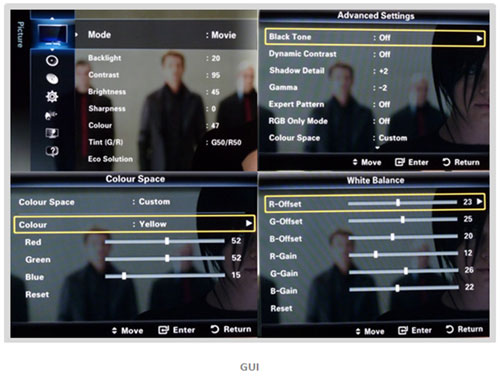
One of the chief selling points of the Samsung UE32C6000 is the ability to tweak and control every aspect of the picture quality. Unlike its competitors, the Samsung UE32C6000 does not feature ISF certification; however, it is armed with an arsenal of user configurable options that would not only appeal to professionals and enthusiasts but also to knowledgeable amateurs. Samsung embedded some simple test patterns to aid calibration, which often requires an external source. With some knowledge, the TV set can be calibrated within few minutes. It will not yield accurate results often obtained from calibrating via colorimeter, but it will definitely deliver improved image quality over the default preset.
In addition, akin to competing models, the Samsung UE32C6000 also features independent source customisation, which allows users to customise and optimise the settings for each source. The Samsung UE32C6000 also has a simple on-screen guide and a simple connection guide (located under the support menu).
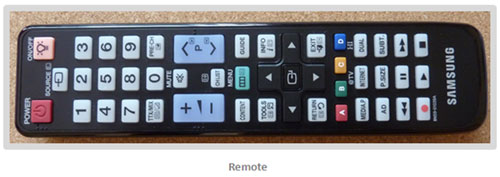
The infrared remote control supplied with the Samsung UE32C6000 is exceedingly practical but lacking in aesthetics. In my opinion, it simply doesn’t complement the display. Then again, the topic of aesthetics is highly subjective and cannot be quantified. So in terms of practicality/ functionality, the backlit buttons are extremely responsive and accurate. The layout is easy to comprehensive, and the clicker itself is light, robust and comfortable to use.
Greyscale and Gamma accuracy are vital for portraying accurate representation of a given image. Therefore, the display must be calibrated to a set of standards used by the industry. In the case of HDTVs, the industry standard for colour space is Rec. 709 (which is similar to sRGB), and both standards share identical white point (D65) and gamma value (2.2).
Greyscale calibration ensures all greys between black and white are free from colour dominance, which is achieved by assigning the RGB values to 6500K (CCT) colour temperature. Unfortunately, it is not possible for a display to yield 100% accuracy. So the goal is to maintain errors within acceptable levels.
Note: The results below were obtained by placing the colorimeter at the centre of the screen. It is done to ensure error values are kept to a safe minimum.
Thanks to the effective calibration tools provided by Samsung, I was able to obtain excellent results without any excessive effort.
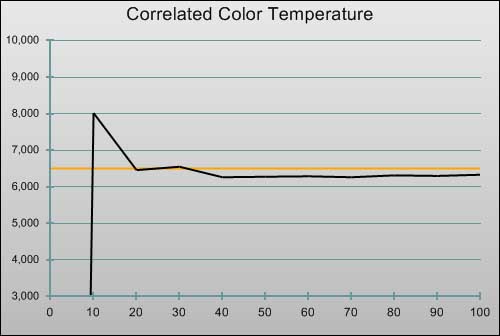 |
| Pre-calibration CCT in [Movie] mode |
 |
| Pre-calibration RGB tracking and delta errors (dEs) |
![Post-calibration CCT in [Movie] mode](https://www.hdtvtest.co.uk/news/wp-content/uploads/2018/04/hdtv_Samsung-UE32C6000_post-cct.jpg) |
| Post-calibration CCT in [Movie] mode |
![Post-calibration RGB Tracking in [Movie] mode](https://www.hdtvtest.co.uk/news/wp-content/uploads/2018/04/hdtv_Samsung-UE32C6000_post-rgb.jpg) |
| Post-calibration RGB tracking and dEs in [Movie] mode |
![Gamma curve in [Movie] mode](https://www.hdtvtest.co.uk/news/wp-content/uploads/2018/04/hdtv_Samsung-UE32C6000_post-gamma.jpg) | |
| Gamma curve in [Movie] mode | Corresponding gamma tracking |
Samsung’s unique 3D CMS (Colour Management System) is close to perfection and allowed us to obtain virtually accurate colours.
![Post-calibration CIE chart in [Movie] mode](https://www.hdtvtest.co.uk/news/wp-content/uploads/2018/04/hdtv_Samsung-UE32C6000_cie.jpg) |
| Post-calibration CIE chart with reference to HD Rec.709 |
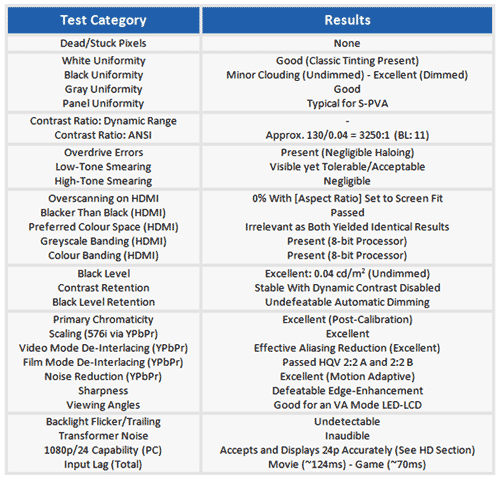

The Samsung UE32C6000 LED-based LCD television produced (overall) good black and white uniformity. During the pure white test (100IRE), I was able to detect the classic red and green tinting commonly found on LCDs, but it was negligible at best. Backlight bleeding was present and detectable when auto-dimming is temporarily inactive and the panel uniformity was typical for a consumer grade display. There were a few visible defects and imperfections across the panel, which hinders calibration accuracy slightly. However, such errors are common to most consumer-grade LCD TVs.
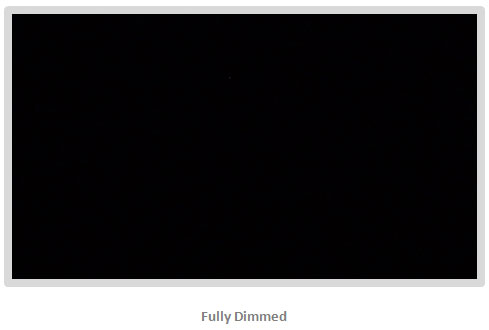
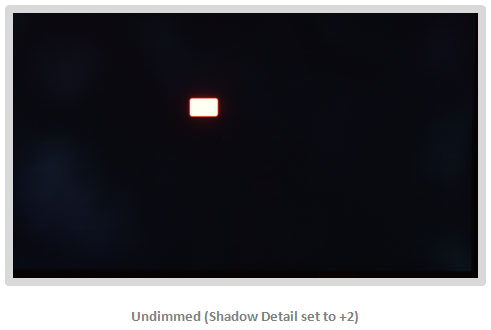
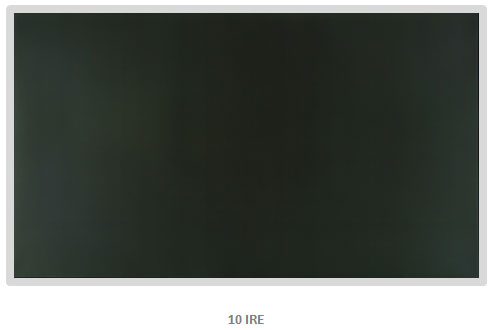
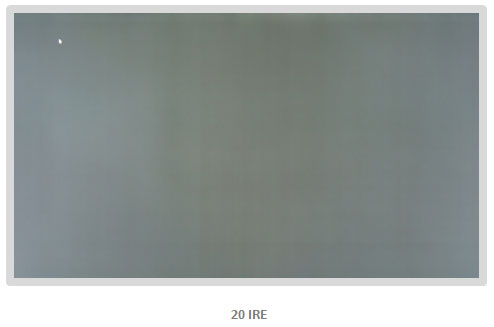
The Samsung UE32C6000 in [Movie Mode] with white level (contrast) set to 95 yielded excellent dynamic range (beyond the meter’s capability) and ANSI of ~3250:1, which is a significant improvement over the 2009 models (also known as B Series). Sadly, auto-dimming cannot be disabled even in Game Mode and there is no option to control its intensity. However, sliding [Shadow Detail] to maximum does drastically reduce aggressive fluctuations in APL.
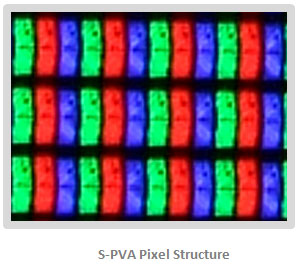
With my usual tests based on PixPerAn, I was able to detect the usual overdrive errors (negligible halos that compass moving objects) and a certain degree of pixel lag, which are still common to LCD displays of late. Low-tone Smearing was present but did not cause any major issues with real-world contents.
Speaking of pixel lag and ghosting, we seem to have a new problem on the Samsung UE32C6000: ghosting caused by pulsing backlight. During the extended test period, I was able to detect highly visible doubling effect (original image accompanied by a ghost image) during fast motion when the backlight set to any number other than 20 (maximum). The doubling effect was also visible with LED Motion Plus (Backlight Scanning) engaged. However, rendering frames greater than 60 seemed to decrease the effect, which explains why when we enabled Motion Plus (Anti-Blur), the effect of doubling was reduced to negligible.
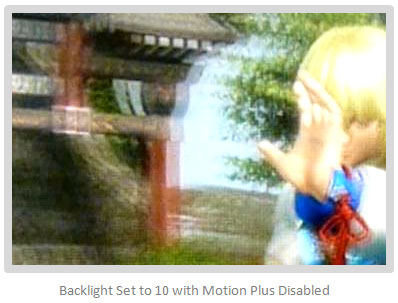
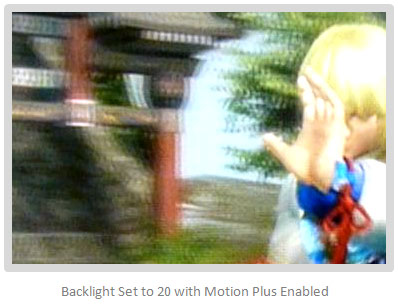
From what we’ve seen so far, the effect of doubling on the Samsung UE32C6000 can only be observed with content which are free from blur or only has negligible blur. We believe the culprit to be the pulsing backlight. Our theory is that as the power to the LEDs decreases, the latency between each pulse increases, which seems to be out of sync with the LCD display. It is also worth mentioning we have witnessed similar phenomenon with LCD TVs produced by other manufacturers.
Samsung was the first company to roll-out a 100/ 120Hz HDTV with MCFI technology, and although it helped to improve motion clarity by reducing hold-time, the implemented algorithm had problems maintaining acceptable level of quality that we have come to expect. Now it would seem Samsung are on the right track nearer to perfection. The MCFI algorithm embedded within the Samsung UE32C6000 produced fewer visual artefacts and stutter than expected when Anti-Blur is set to 6. However, it must be noted that the outcome is entirely determined by the source and content. In other words, contents with variable frame rates (e.g. Music Videos) can easily confuse the MCFI algorithm, which often leads to frame-jumps/ stutter and visual artefacts.
Overall, the Samsung UE32C6000 with Motion Plus (Anti-Blur) enabled produced excellent motion detail, which will no doubt appeal to sports enthusiasts.
Overscanning: The aspect ratio can be configured by pressing the [P.Size] button on the remote or via the Main Menu. Unfortunately, the Samsung UE32C6000 does not feature the option to zoom into contents mastered in Cinema Scope Aspect Ratio (2:39:1), though doing so will decrease perceived resolution due to cropping and scaling anyway.
Blacker-Than-Black (HDMI): The Samsung UE32C6000 accepts both 0-255 and 16-235 formats and configures itself automatically. If it fails to do so, it can be overwritten by the user via the main menu.
Viewing Angles: LED-backlit LCD HDTVs based on VA panels had the unfortunate reputation of having poor viewing angles. Thankfully, it would seem that Samsung has acknowledged this issue, and has enhanced the viewing angles to an acceptable standard. The SPVA panel embedded within the Samsung UE32C6000 yielded rather fine all-round viewing angles, with serious shifts in colour and contrast limited to extreme angles when viewed from the recommended viewing distance of 1.6 meters. However, gamma shift does desaturate light tones to an extent but it’s common to all VA-based panels.
Sharpness: The Samsung UE32C6000 fully supports full 1:1 pixel mapping as well as the option to configure edge-enhancement.
For evaluating image quality in the real world, we used a series of images known to expose even the most hidden artefacts and errors.
Note: The following three tests were conducted under [Movie Mode].
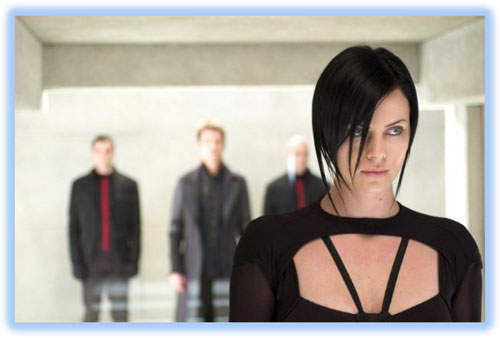
The Samsung UE32C6000 yielded good results following simple calibration in [Movie Mode]. The mass shades of warm colours that envelop Charlize Theron’s face, neck and chest were identifiable though unnaturally warm. However, the average consumer may not be able to detect the error without a reference display for side-by-side comparison.
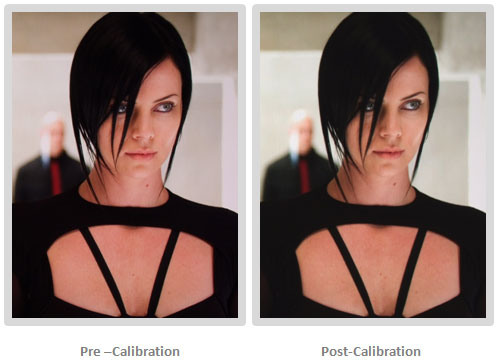
The white balance controls on the Samsung UE32C6000 allowed us to rectify the red shift and we immediately noticed an overall improvements in greyscale and colour accuracy. Thankfully, the default colour decoding (auto) was within tolerable level, so the difference between pre and post calibration was negligible at best (visually speaking of course). The final calibrated image appeared natural and true to life as we expected from a Samsung display.

We used the image above to detect visual inaccuracies in greyscale, gamma and black crush; and the performance of the Samsung UE32C6000 was above average (prior to greyscale calibration). There was no evidence of any serious black crush, nor could I detect any form of gamma error. However, the presence of red dominance was obvious. That stated, most viewers probably won’t be able to spot the errors in the absence of a reference display.

After greyscale calibration, the rendered image was on par with one of our reference display models (the Dell 2209WA). It is worth noting that CMS had very little impact.
High-def materials on the Samsung UE32C6000 were beautifully rendered, and video noise was kept to a bare minimum. The Ultra Clear Coating provided a sense of additional depth and lucidity comparable to competing high-end models. However, reflection did pose a problem and could be controlled better. The lack of 10-bit processor was an oversight, but visible posterization was limited to certain test patterns.
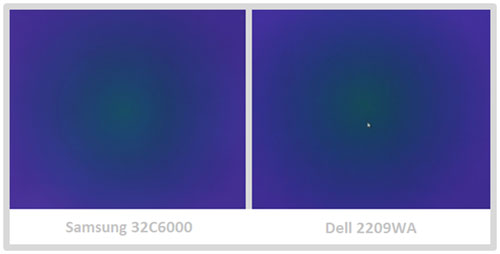
As for the auto-dimming, it would have been ideal to have an option to manually control its intensity/range as well as the option to disable it. However, aggressive variations in APL can be overcome by sliding the [Shadow Detail] option from -2 to +2. Doing so will only enable auto-dimming when the source is virtually deprived of data. Thankfully, even in the dimmed state, the saturation of primary and secondary colours remain intact since the Samsung UE32C6000 panel can natively produce 0.04 cd/m2.
The Samsung UE32C6000’s 24p performance was comparable to high-end models. It produced clean judder-free motion, but only with Motion Plus enabled. Thankfully, both [Blur Reduction] and [Judder Reduction] can be set to 0 so the motion remains authentic and free from interpolation. The failure to apply even pull-down (5:5) could be the result of a bug or programming oversight. It is worth noting that Sharp LE700 series still holds the crown for rendering motion comparable to DLP cinemas without the aid of MCFI.
In a nutshell, the Samsung UE32C6000 only suffers from minor forgivable bugs, oversights and imperfections, some of which can potentially be amended via firmware update. In terms of HD performance, the LED LCD TV hits every mark with the exception of auto-dimming and the lack of 10-bit processing.
The UE32C6000 produced excellent results with negligible noise via YPbPr as we have come to expect from Samsung. It triumphed in surpassing ATI’s UVD 2.2 in both jaggies pattern 1 and 2 found on the HQV test disc. Such excellence will no doubt benefit users with SD content and legacy game console.
Scaling: Upscaling 576i via YPbPr produced excellent results, but failed to beat the ATI UVD 2.2, which is to be expected.
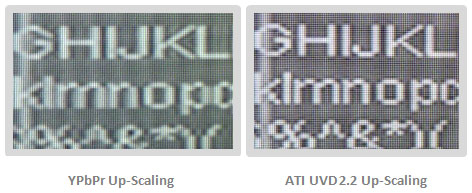
Film and Video Mode De-Interlacing: The Samsung UE32C6000 did an excellent job of reducing jaggies to negligible levels during de-interlacing of high-motion contents, which can be easily mistaken for progressive source. The TV also passed pull-down detection found on the HQV disc with flying colours.

Digital Noise Reduction: Thanks to Adaptive Noise Reduction, enabling NR did not cause any form of adverse motion related artifacts (e.g. smearing). Motion detail and saturation levels remained true to the content.
The Samsung UE32C6000 could have triumphed in the game sector, but sadly it was let down by high input lag. However, casual players may not be able to detect the latency in Game/PC Mode with certain types of games (e.g. RPG, Racing, RTS etc.). However, FPS and Rhythm Game fans may want to avoid Samsung UE32C6000 and opt for a model with input lag of less than 30ms.
Aside from notable improvements in viewing angles and black levels, Samsung also managed to improve the sound quality on the UE32C6000 by adding a low-frequency enhancer behind the unit. It not only produces audible low frequencies, but also provides fuller sound (with help of the built-in equalizer) as opposed to cheap and metallic sound usually associated with Super Slim panels. However, it is best not to push volume level beyond 30 as it causes audible distortion.
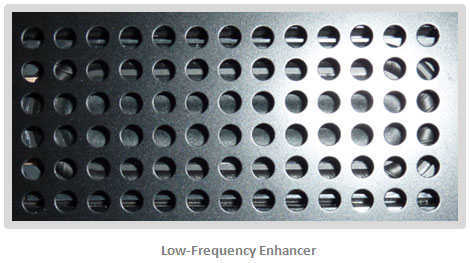
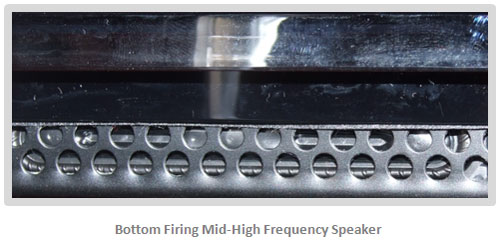
Sadly, there is no headphone jack on the Samsung UE32C6000, which isn’t unique to the model in question. It would be ideal for a smaller TV to have headphone jack as it is often placed in the bedroom.
Samsung produced yet another winner that will appeal to many users, and managed to improve upon the previous model in every aspect bar input lag. For that reason and the auto-dimming, the Samsung UE32C6000 slipped away from the top spot. Hopefully Samsung will acknowledge that HDTVs of today are no longer mere devices that display images from STBs and Deck Players, but serve a much wider purpose (e.g. monitors, gaming, picture frame etc.). We appreciate that it is not easy to lower the input lag while rendering high quality image that is pleasing to the eye, but surely there must be a solution to amend the issue. We urge Samsung on behalf of our readers to take input lag gravely and to reduce it to an acceptable level of 30ms or below.

<!-- google_ad_client = 'pub-2887677957235196'; google_ad_slot = '0693194791'; google_ad_width = 336; google_ad_height = 280; //-->